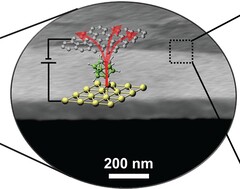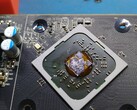Imagine CPU / GPU coolers without fans, massive heatsinks or water pumps. Such a solution might not be too far away, as a study conducted by a research team at UCLA details how heat-channeling thermal transistors offer superior cooling potential compared to anything available right now.
Thermal transistors have proven to be 13 times more efficient than traditional methods. The increased efficiency comes through a molecule-thin layer that switches to a conductive state under low voltage. This way, thermal transistors spread the heat more evenly, moving the accumulated heat from the hot spot towards the extremities. In order to achieve such a high efficiency, the UCLA team needed to tune the electric fields to easily switch from millihertz to megahertz frequencies.
What makes this solution stand out is the small amount of power needed to control the heat flow and the possibility of integrating thermal transistors directly into the chip that needs to be cooled, especially now that chip makers are shifting towards 3D-stacked chiplet designs. Additionally, thermal transistors could also work well with power banks made from gallium nitride and silicon carbide. The UCLA team notes that the technology is still in early development and the efficiency could further be improved with more research.
Apart from the benefits brought to semiconductors, researchers are using the data collected through thermal transistors to better understand how living cells regulate temperature, as the molecular-level mechanisms are still unknown.
Buy the Asus ROG Strix LC II 240 all-in-one AIO liquid CPU cooler on Amazon





















